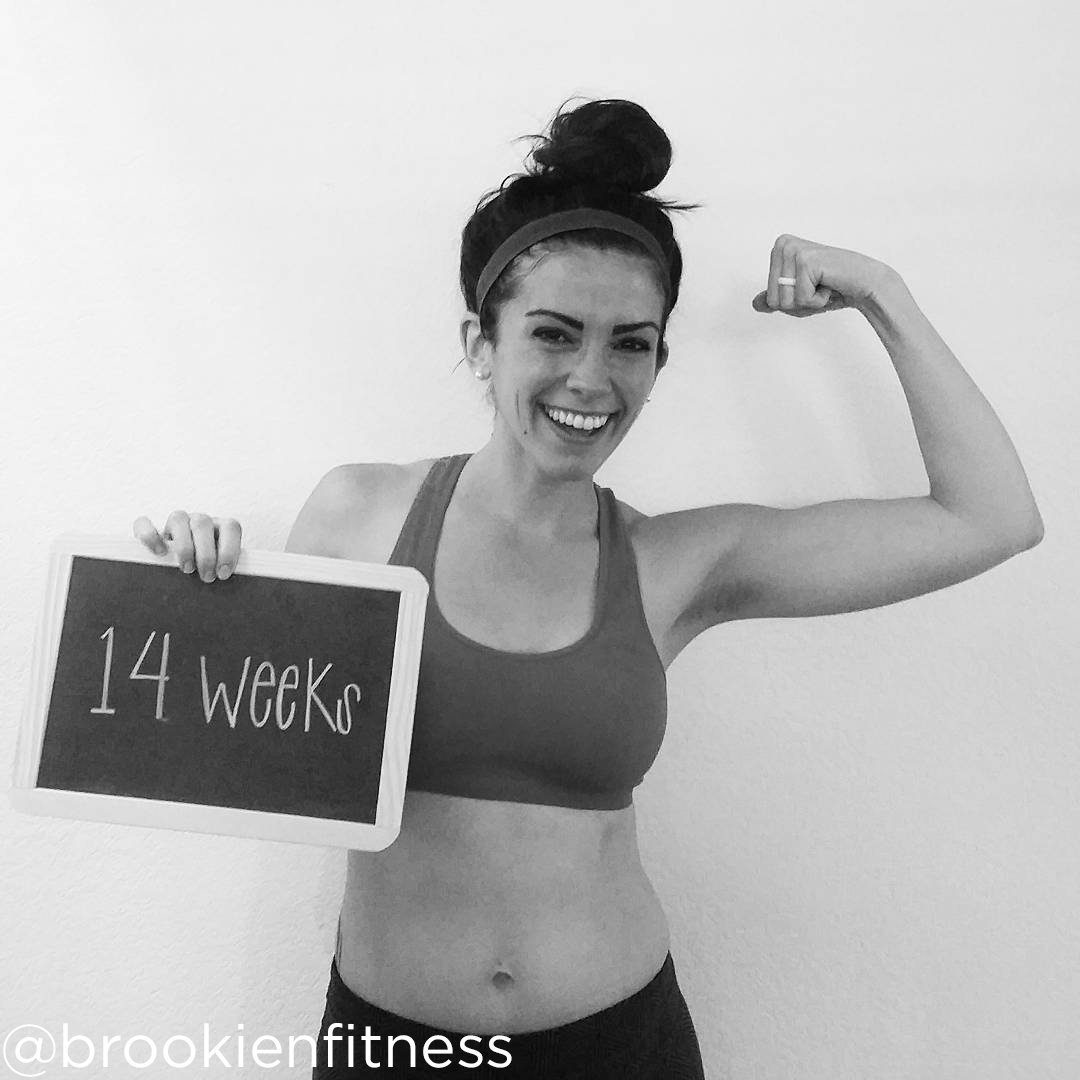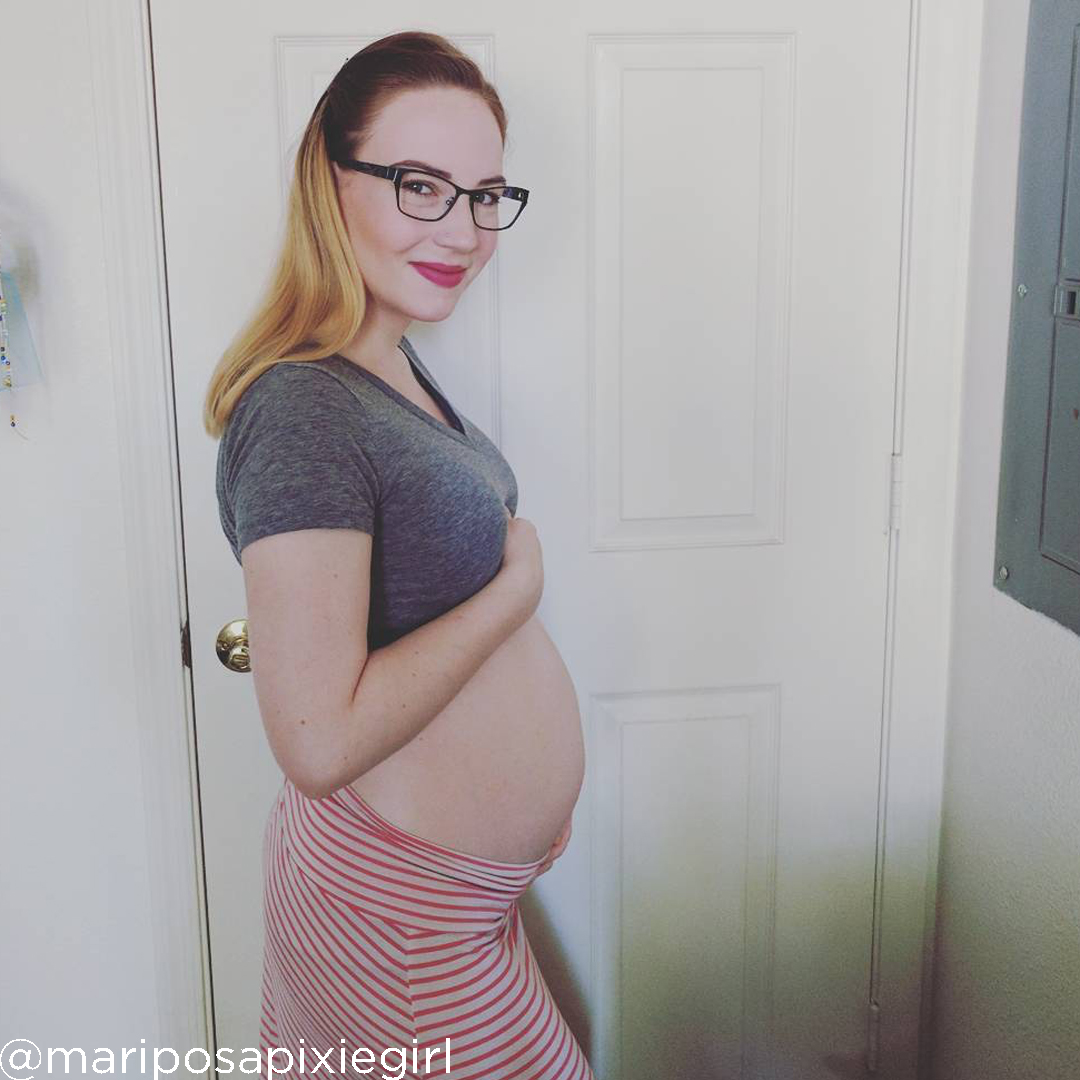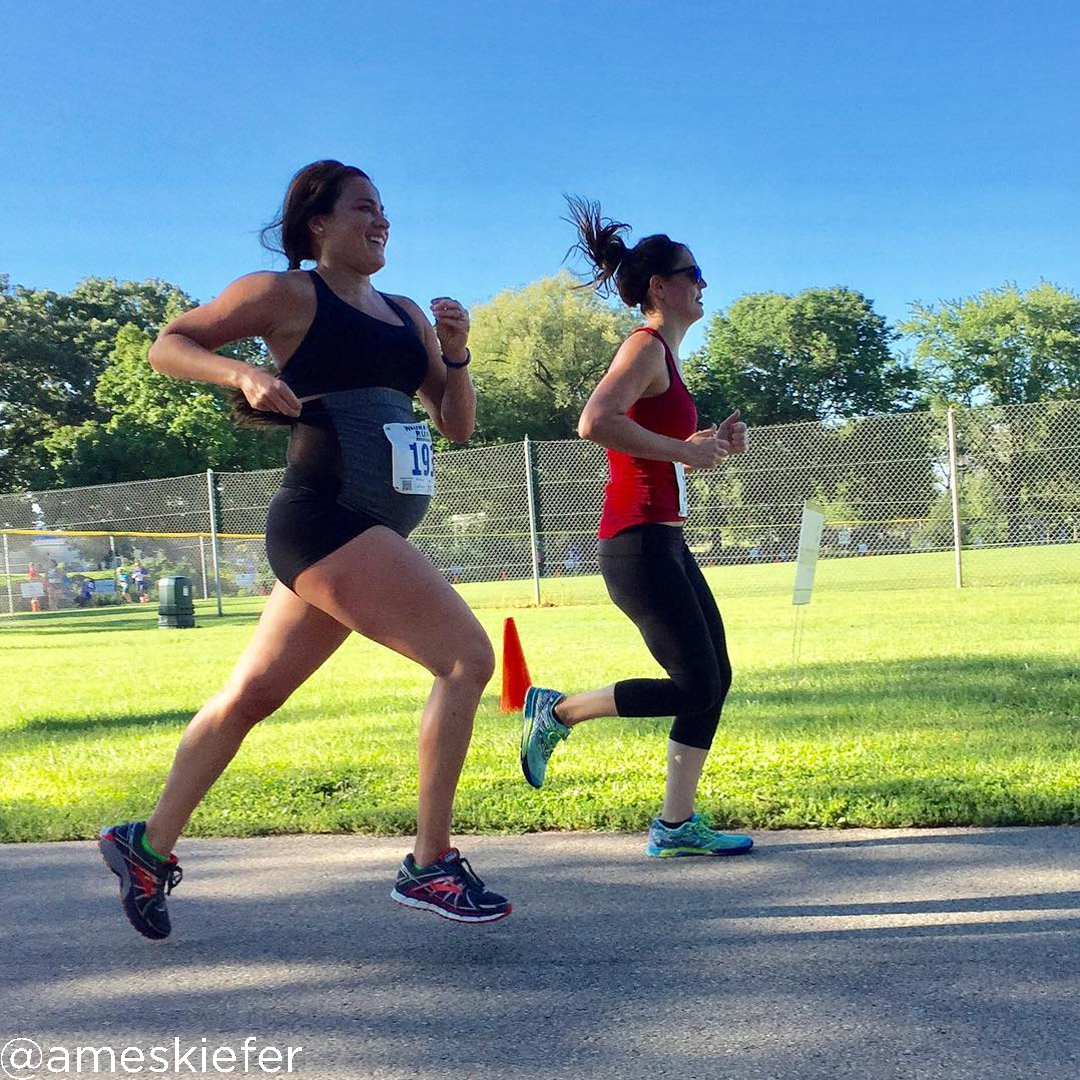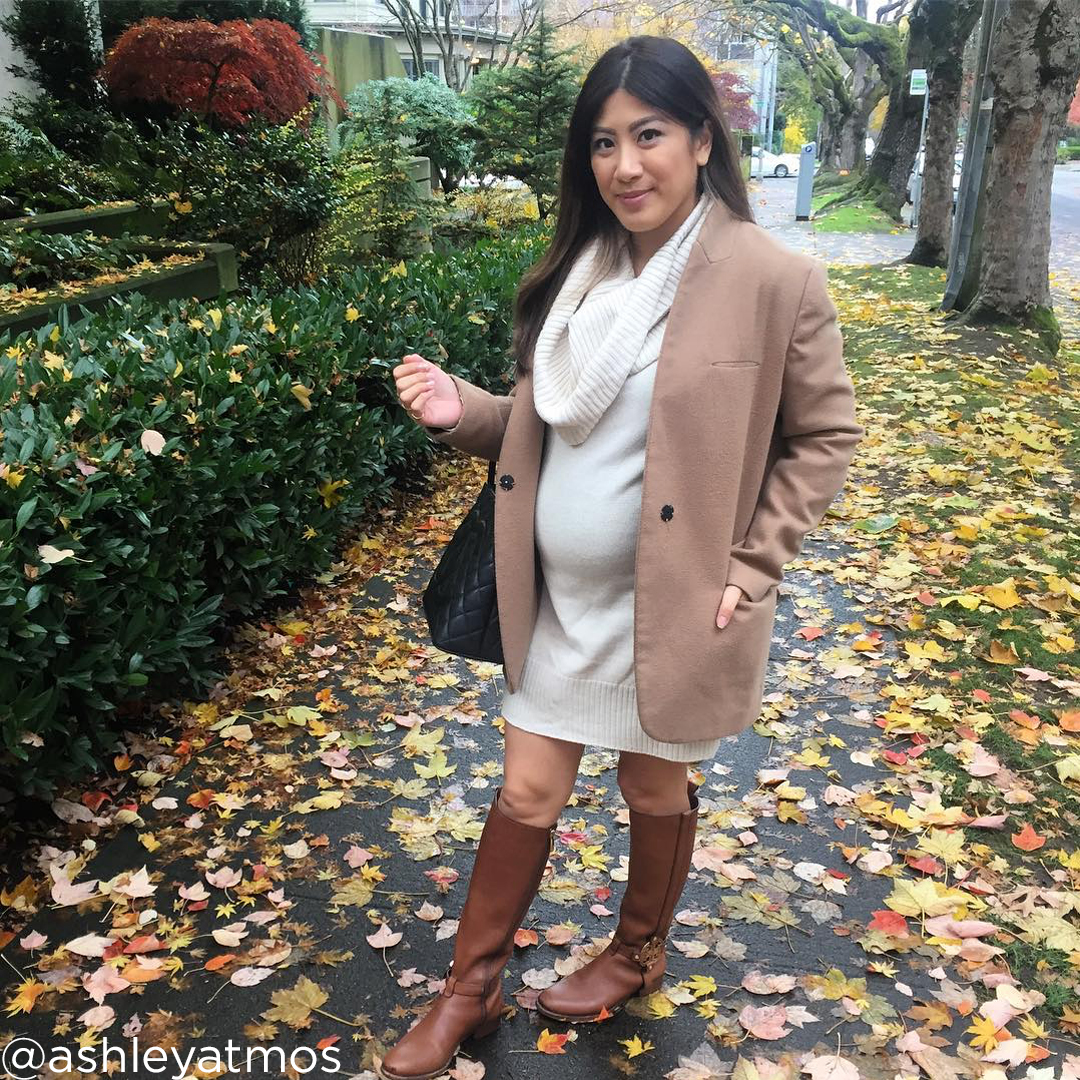Second Trimester of Pregnancy
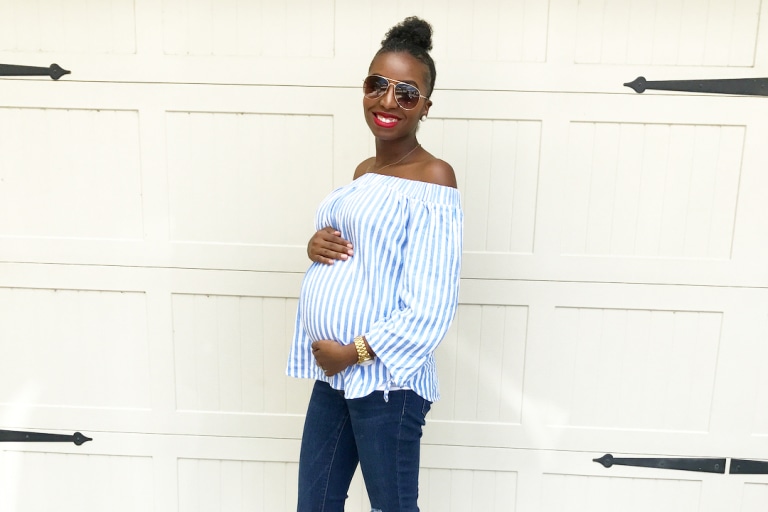
You made it through the first trimester! For most people, this means you should see an end to the extreme fatigue and morning sickness that made those first weeks tough.
During this next trimester, you’ll probably feel more energetic—take advantage of this to start nesting. You’ll definitely begin to look pregnant during your second trimester (hello, belly!), so now’s the time to build out your maternity clothing wardrobe. Your baby will also be very busy developing, putting on the pounds and starting to move around in there.
Here’s what to expect during your second trimester.
Baby’s development in the second trimester
Baby is kicking it into high development gear now. A lot happens during the second trimester.
Baby starts the second trimester around 2.9” and 0.81 ounce (around the size of a Tamagotchi virtual pet. By 27 weeks, they’re about 14.4” and 1.93 pounds. Go, baby, go!
They’ll begin to be measured in something called fundal height, which is basically the size of your bump, or the distance from your pubic bone to the top of your belly. This measurement is used as a way to make sure baby is growing.
What else is going on there? By 16 weeks, their umbilical cord is fully developed, and by 18 weeks, baby can hear—your heartbeat is the loudest sound they hear. By 25 weeks, they’ll be responding your voice—and by end of the second trimester, your partner’s. Time to talk to baby and make them a playlist of all your favorite songs!
By 18 weeks, baby can hear—your heartbeat is the loudest sound they hear.
Baby is growing a softy coating called vernix caseosa, or “cheesy varnish” that prevents their skin getting all wrinkly in the amniotic fluid. It will mostly slough off by birth, but you might notice some if it still on baby’s skin after their born. Same for lanugo, which is the soft, fine hair that covers a newborn.
If you want to find out your baby’s sex, you’ll be able to at your 20 week ultrasound (assuming baby cooperates!).
They’re also developing something called meconium, which will become baby’s first poops. Most babies pass this shortly after birth (though some do it in utero or on the way out). These poops look gross and are sticky, but they don’t smell and are usually gone with the first day or two, replaced by other gross poops that come with breastfeeding or formula feeding.
By the end of the second trimester, baby will have developed regular sleep patterns, which usually means they’re lulled to sleep during the day by your regular movements and up and ready to party when you’re turning in for the night. Also, hiccups, which you’ll feel. So cute!
Second trimester pregnancy symptoms
Heartburn during pregnancy
The good news is that the nausea of your first trimester has probably passed. The bad news? Up to 50 percent of women experience heartburn at some point during pregnancy, thanks to increased progesterone levels relaxing the tube between your stomach and esophagus, allowing stomach acid to pass more easily into the esophagus.
If you’re suffering, here are some ways to relieve the discomfort
- Avoid spicy or fatty foods, or other types of food and drinks that don’t agree with you. It could be anything from caffeine to citrus fruits.
- Eat smaller meals throughout the day instead of three big ones.
- Don’t eat right before bedtime. Give your body at least an hour to digest before hitting the pillow.
- Talk to your doctor. If your heartburn is severe or doesn’t seem to be improving with lifestyle changes, there are prescription meds that could help. Avoid taking an over-the-counter antacid, though, without talk to your healthcare provider.
What to eat—and what to avoid—during pregnancy
Now that your appetite is—hopefully—back, you’ll want to make sure you’re eating healthy and getting the good nutrients you and your baby need. Now is not the time to count calories, but it is a good idea to be mindful about eating a well-balanced diet with lots of whole grains, fresh fruits and veggies, lean proteins and good-for-you fats, like avocado.
In general, pregnant people should eat somewhere between 2,200 and 2,900 high-quality calories a day. You should aim for an additional 340 more calories than normal during your second trimester.
Now is not the time to count calories, but it is a good idea to be mindful about eating a well-balanced diet.
Try to increase your intake of calcium (think yogurt and dark, leafy greens like kale and spinach) and iron (beans, tofu and nuts like walnuts and almonds are good non-meat options), as well.
There are some foods that are good to avoid during your pregnancy. Opinions vary on the safety of certain things—some steer clear of caffeine, for instance; others embrace their morning latte—but in general, it’s a good idea to avoid fish containing high levels of mercury, like tuna, shark and other big fish, as well as foods like raw, soft cheeses, deli meats and hot dogs, because of the risk of listeria. It’s a food-borne illness that you’re at a greater risk of getting when you’re pregnant.
As for alcohol, most doctors and midwives would say avoid it completely, though there aren’t any studies that say an occasional glass of wine (actually one glass, like 4 oz) has negative effects on babies later in pregnancy.
Feeling your baby move
Between 18 and 25 weeks, you’ll probably begin to feel your baby moving. So exciting! At first it feels like a light fluttering, known as “the quickening,” but you’ll soon start feeling kicks, jabs and somersaults from your growing baby. As you get later in your second trimester, your partner may be began to feel baby moving around in there, too. At the beginning of your third trimester, you’ll start doing kick counts.
Leg cramps during pregnancy
You may start experiencing leg cramps during your second trimester, particularly when you’re sleeping, thanks to pregnancy weight gain, swelling and changes to your circulation that make it hard for your blood to get from your legs to your heart.
While they are super annoying and disrupt your sleep, leg cramps aren’t serious. If you’re experiencing them, drinking water, stretching throughout the day and regular exercise can help you prevent them. Compression socks or stockings can also help get your blood flowing, particularly if you’re flying.
When leg cramps do wake you up at night, stretching and massaging the muscle, as well as applying a well warm washcloth or heating pad, can help ease the cramping.
Second Trimester Baby Bumps
Sleep during your second trimester
The exhaustion of your first trimester should be gone, but as you move toward the latter part of your second trimester, you’ll find yourself faced with new sleep challenges.
As your belly grows and your body changes, you may find it harder to get comfortable at night. Pregnancy pillows will be your friend. Consider shopping for one now.
This also is a good time to start sleeping your side, particularly your left, as it’s the best position for blood flow to the uterus. Of course, you can’t stay in one position all night, so if you wake up on your back, don’t freak out! Just roll over and try to go back to sleep.
Sex during pregnancy
You may find yourself wanting sex more often during your second trimester—your morning sickness is gone, and all that estrogen may be kicking your desire into high gear. Or not. If you’re just not feeling it, know you’re not alone. Be open and honest with your partner, and find other forms of intimacy to foster your connection. (Here’s a NSFW podcast with tips for parent sex).
You may find yourself wanting sex more often during your second trimester.
If you are comfortable having sex, don’t worry about hurting the baby—they’re nice and cushioned in all that amniotic fluid—and experiment with positions that are comfortable for your changing body. Also, as long as your doctor says it’s okay, you can keep doing it until you go into labor.
Stretch marks and other pregnancy skin issues
Your skin goes through lots of changes during your pregnancy. As your belly expands during your second trimester, you might notice stretch marks developing on your stomach (they also sometimes show up on your butt, thighs, hips and breasts). They start out pronounced, ranging from dark brown to pink, depending on your skin color, and eventually fade, though they never really go away. Not all women get them, and you can’t really do anything to prevent them from happening. You’ll see a lot of stretch marks creams on the market, but they haven’t been proven to do anything to reduce them or stop them in the first place.
Creams and lotions can help relieve another pregnancy skin issue some women experience—an itchy, dry belly. Fragrance-free versions are your best bet, so they don’t further irritate your skin.
You may also notice blotches of darker skin appearing on your face (known as “the mask of pregnancy”) or a dark line—linea nigra—appearing from your pubic bone and up and over your belly button. The official name for it is melasma, and it’s from an increased production of melanin. If it’s affecting you, try wearing sunscreen (SPF 30 or higher) every day and wear a hat when you’re outdoors. This should go away on its own once your baby is born.
Weight gain in the second trimester
Most people have gained about eight to 10 pounds by midway through their pregnancy (around 20 weeks), and will start gaining a half to a full pound per week going forward. By the end of the second trimester, you’ll probably have gained 12-17 pounds.
About one-quarter of your weight gain is coming from extra fluids (here’s what makes up the rest), so swelling during pregnancy is completely normal, especially in your ankles and feet. If it gets uncomfortable, try staying off your feet and reducing your caffeine and sodium intake to manage it. If you have sudden, extreme swelling in your hands and feet, contact your doctor. It may be a sign of preeclampsia.
What is preeclampsia?
Some pregnancy complications can be scary. Preeclampsia is one of them. A condition that involves high blood pressure and damage to the kidneys or liver, it affects between two and five percent of pregnancies. It usually begins after 20 weeks of pregnancy.
What are preeclamsia symptoms?
- Blood pressure above 140/90 on two occasions and blood pressure above 160/110 at least once
- Upper abdominal pain
- Protein in the urine
- Swelling in the face or hands (not everyone experiences swelling)
- Vision changes, like blurry vision or seeing spots
- Headaches that don’t go away
- Vomiting (in the second half of pregnancy)
If you notice any of these symptoms, call your doctor as soon as possible. Know that preeclampsia is treatable, so getting the right care early enough is very, very important for you and baby.
Second Trimester Pregnancy Checklist
- Schedule your 20 week ultrasound (and decide if you want to find out your baby’s gender).
- Make your pregnancy announcement to friends and family.
- Start your baby registry.
- Make your list of baby names.
- Schedule a dental cleaning. Pregnancy increases the risk of gum disease, so take extra care of those teeth right now.
- Baby shower time is quickly approaching. First steps: figure out who is going to host and where, set a budget and pick a date.
- Enroll in a childbirth or baby care class through your hospital, birthing center or local parenting center.
- Make your gestational diabetes lab appointment for 24–28 weeks (remember you have to wait 1-3 hours at the lab).
- Schedule a few daycare tours if you’ll be needing childcare.
- See if your health insurance will provide a free breast pump.
- Decide if you’re going to hire a doula.
- Write your birth plan.
- If you’re thinking of taking a babymoon, talk locations and start booking your travel.
- Make time for yourself. Schedule a prenatal massage, mani/pedi or whatever makes you happy.


